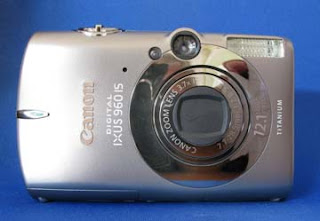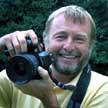Photographs by Jeanette Suddard
Well, we came to the end of another photography holiday in Menorca the other day, and I think I can say that everyone had a wonderful time. There was just one new student in the group this time – Jeanette. She came with partner Phil, who has been to me for tuition in Scotland. Of course, Jeanette was naturally nervous to begin with because she is a beginner, but she quickly realised that the way I run these photography holidays is anything but formal.
And what fantastic progress Jeanette made over the week. At the start she had no understanding at all about shutter speeds or apertures; knew nothing about colour temperature, the direction of light or depth of field. However, Jeanette possessed the most vital ingredients for successful photography – she had a natural eye for a picture, she was mad keen to learn, and she just loved taking photographs.
I would like to think that after just one week working with me and with the help of all the others in the group – these holidays really are a sharing experience – Jeanette is now well along the way to becoming not only a competent photographer, but a photographer who can capture something special.
I’ll be showing you some of the pictures taken by the group in forthcoming posts – I think you will agree that some of the shots are really outstanding. But that is to be expected when among the team were regular Photoactive snappers Ken Terry and Maria Falconer. Some of their photographs are just superb. Among the subjects tackled and the places visited were underground chambers, a winery at Binifadet, and a horse trotting event. We worked in a whole variety of light including flash and mixed temperature light - just wait till you see some of the pictures that were produced.
The top photograph shows just how well Jeanette’s eye was working. She spotted this dramatic shot as we were waiting for the daylight to fade and the street lights to come on so that we could photograph ‘mixed light’.
The bottom photograph demonstrates a keen eye for pattern and colour… very well done Jeanette
And what fantastic progress Jeanette made over the week. At the start she had no understanding at all about shutter speeds or apertures; knew nothing about colour temperature, the direction of light or depth of field. However, Jeanette possessed the most vital ingredients for successful photography – she had a natural eye for a picture, she was mad keen to learn, and she just loved taking photographs.
I would like to think that after just one week working with me and with the help of all the others in the group – these holidays really are a sharing experience – Jeanette is now well along the way to becoming not only a competent photographer, but a photographer who can capture something special.
I’ll be showing you some of the pictures taken by the group in forthcoming posts – I think you will agree that some of the shots are really outstanding. But that is to be expected when among the team were regular Photoactive snappers Ken Terry and Maria Falconer. Some of their photographs are just superb. Among the subjects tackled and the places visited were underground chambers, a winery at Binifadet, and a horse trotting event. We worked in a whole variety of light including flash and mixed temperature light - just wait till you see some of the pictures that were produced.
The top photograph shows just how well Jeanette’s eye was working. She spotted this dramatic shot as we were waiting for the daylight to fade and the street lights to come on so that we could photograph ‘mixed light’.
The bottom photograph demonstrates a keen eye for pattern and colour… very well done Jeanette









